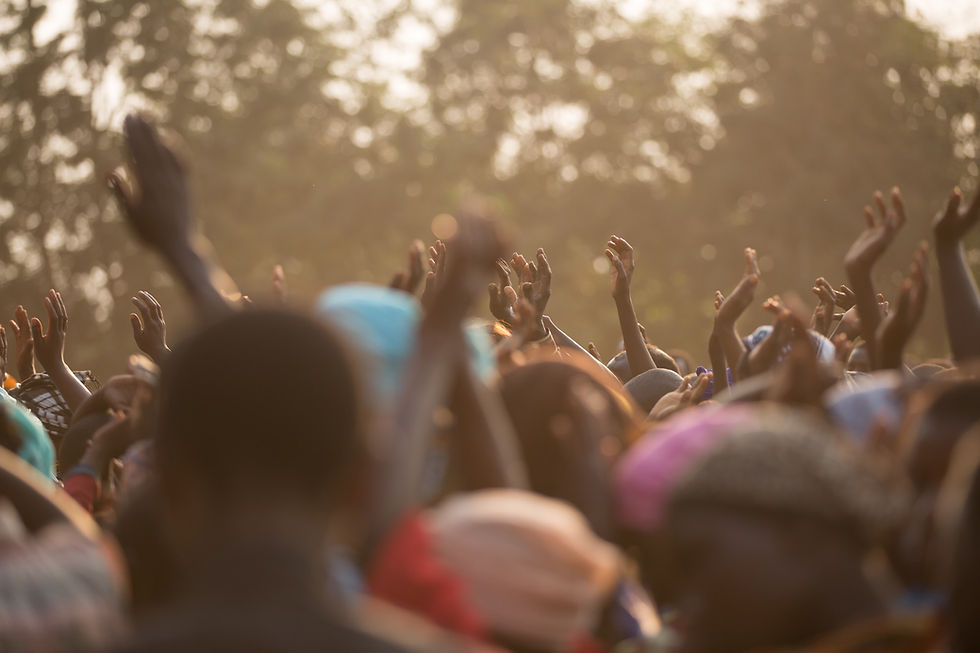Kujichagulia In Action
- gawat2
- Apr 19, 2022
- 4 min read

This week's readings really drove home the concept of Kujichagulia for me. In the article, Africans Push Back Against Western Media's Images of Suffering Continent the idea that certain narratives, images, and themes persist regarding the continent in western media to further an ideology that Africa needs assistance in order to survive.

Coverage relating to Africa paints it as a wild, savage, famine-ravaged, war-torn, disease-ridden, dangerous, lawless place where its own citizens/residents find themselves in the position of constant victims, while simultaneously being painted as the aggressors in an unending cycle of negative impacts wrought on the land. There is rarely any mention of the continuous pillaging of natural resources, environmental damage as a result of those practices, and the endless meddling in the affairs of Africa from outside sources. We never see how outside influence promotes negative impacts on the health of the countries where they interfere. We learn that Africa is ripe for exploitation in the form of NGO fundraising schemes, and if you've been reading anything about Africa, in resources as well.
We don't get to see thriving cities, sprawling industry, technological innovations, or any of the medical pioneering practices happening on the continent. We in the west can't even fathom any of these activities taking place anywhere in Africa due to what we are constantly shown.
How does this relate to Kujichagulia?
Africans themselves are pushing back against the imposed western identity that has been thrust upon them and speaking up in order to self-identify and show more sides to their homeland. There's a rejection of the narratives that don't match the lived experiences of many Africans. No one denies that there are problems, but there is a desire to draw attention to the areas where Africa excels as well.

In Basic Tenets of Critical Race Theory, the idea of "interest convergence" was of particular interest to me in how racism is used as a tool to not only position a ruling class, but that one of the mechanisms that is used is the gatekeeping of who is included and who isn't. People of the African diaspora have never identified themselves as ________. We were called colored by the oppressing class, then negro, then Black, and now African American. Our identifiers were placed on us for the sole purpose of keeping us on the outside of the acceptable social circle.
These words are signifiers for the ruling class to put sounds to the concepts of exclusion. Yes, as the text highlights, society creates race, but in our case, we in the west were not allowed to retain our cultural identifiers. Our heritage, like that of indigenous people, has been suppressed by multiple methods in order to disconnect us from our identity while establishing the dominant culture as being the only strong and worthy one.

These ideas fit into Antonio Gramsci's concept of cultural hegemony because in the first article, the west, believing that its ideals are the dominant global culture, makes every attempt to control the concept of culture in other countries by the way it presents information and images on them. In the second article, racism as a whole functions based on the dominant culture attempting to define and suppress the culture of others while continuously magnifying their own and presenting it as the norm.
There is a constant tension between creating your own identity, shirking the identity given to you, and existing within an environment that promotes an ideal identity that never reflects you for people who are not a part of the dominant culture. As generations continue to arrive and learn, we are seeing the recognition of nuances of our oppression more clearly, and now, as Gramsci posited, cultural resistance is becoming more prevalent.

Consider when rap music initially arrived on the scene. It was painted as destructive, dangerous, and worthy of condemnation. Why do we think that is? Rap was the one of the first musical outlets where Black artists voiced their pain, frustration, and lived experiences. The dominant culture rebuked this expression and sought to suppress it. When the audience grew, the dominant culture sought to monetize it so that it could make the lion's share of the profit while exploiting artists to push narratives that reinforced stereotypes and negative narratives about Black and Brown culture.
Some artists have broken free of the tropes and have found platforms where they can amplify and uplift the Black experience. Kujichagulia is on full display as we hear versus that celebrate Black and Brown life, contributions, vibrance, inventiveness, swagger, and family units. We are forming our own narratives and we are actively pushing back against anything that dehumanizes, minimizes, and negatively impacts our culture in greater and greater numbers.
We're keeping our natural hair textures at work. We're not giving up AAVE. We're creating our own media outlets. We're taking over areas in spaces that weren't necessarily designed for us (hey, Black Twitter!). We're educating ourselves and our families. We're determining who we are on our own terms. We're lifting our voices AND our fists, because these hands are always rated E for Everyone if you come at our people with the foolishness. Kucjichagulia today and every day.



I enjoyed alot of your points, and imagery. Black excellence has always been a cause of fear for whites. Our voices are heard on social media, music, murals, and other forms of expression. The NGO, and interest convergence are two points that jumped out to me also with this week's assignment. Great post.